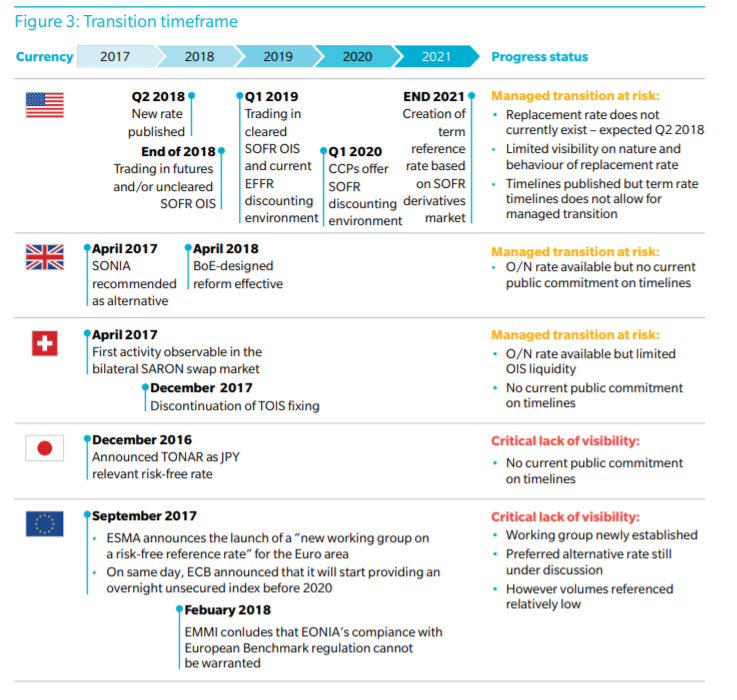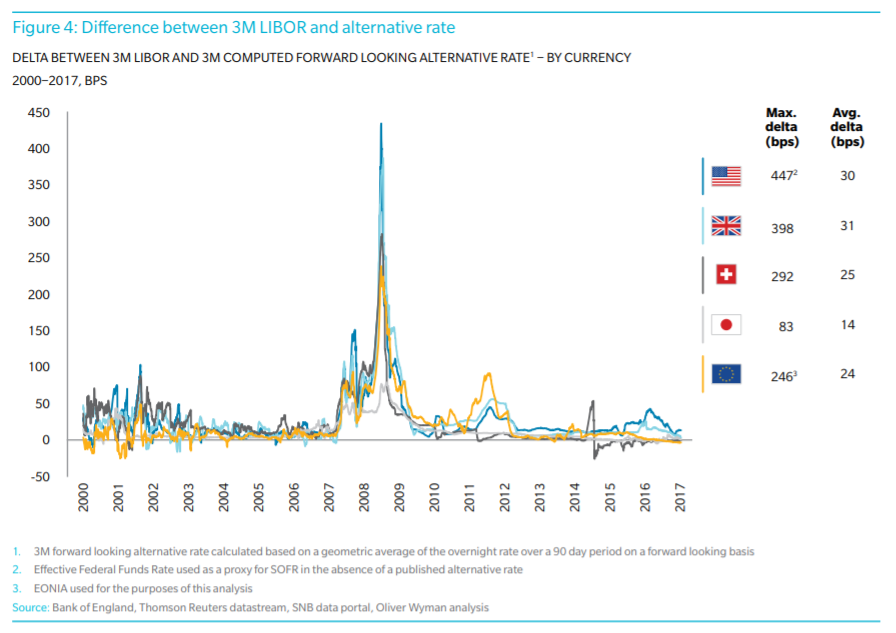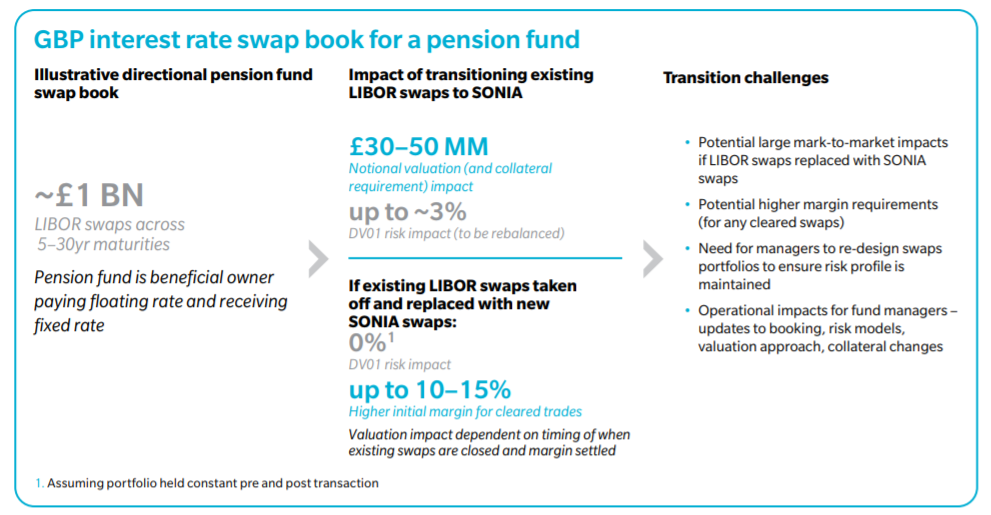Transitioning away from LIBOR could create considerable conduct, reputational and legal risk. Even today, writing long-dated business that may extend beyond a LIBOR transition period entails conduct risk. Without clarity about the alternative rates or when the transition will happen, it is difficult to know how contracts should be priced. The longer uncertainty persists, the greater the mis-selling risk incurred by financial firms.

Financial firms still have the opportunity to work with regulators to influence the transition process and outcomes. The alternative rates are defined but market expectations and choices are not. A wait-and-see approach would be unwise. Given the volume of products and processes that will have to change, the transition away from LIBOR entails considerable work and risk. Preparations should start immediately.

Given that bank funding no longer includes much unsecured interbank lending, setting prices on LIBOR does not provide the “natural hedge” it once did. As a result, moving to the new reference rates will change the nature of the asset-liability mismatch risk banks face between their borrowing and lending activities. In short, shifting from LIBOR to the proposed alternative reference rates will not be like shifting from miles to kilometers in the measurement of distance. It will require more than applying a simple conversion rate to the values in products to arrive at an economically equivalent contract. New contracts and products, using the new reference rates, will not be economically identical to the old ones based on LIBOR. The transition will thus have important long-term implications for product design and market risk management.


